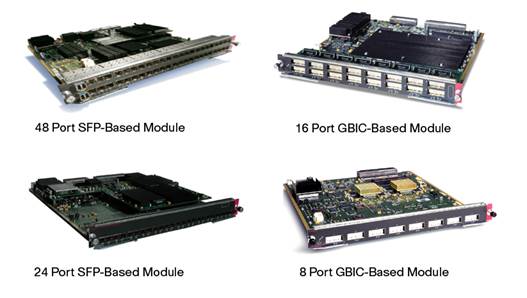After learning more about a variety basic or conclusive knowledge of transceiver modules these days, I believe you must have a new understanding or a deeper perception on the transceiver modules. In fact, that's just a tip of iceberg. My blog will continue to bring more information about the fiber optic transceiver modules, such as SFP transceiver, fibre SFP module 10G, XFP and so on. Also the other knowledge of fiber optic communication, network, telecom etc. to all of my friends who like this field and like my blog. Since we discuss so much about the theories of the transceiver modules, today, I prefer to talk about something practicle, for instance, some knowledge about installing or removing different kinds of transceiver modules.
As we know, the commonly used transceivers include the following 8 types:
- GBIC (Gigabit interface converter)
- SFP (small form-factor pluggable)
- SFP+
- XENPAK
- X2
- XFP
- QSFP/QSFP+ (Quad Small Form-factor Pluggable Plus (QSFP+) )
- CFP (C Form-Factor Pluggable)
The following content will cover the knowledge of installing or removing for these types of transceiver modules, namely today's main topic. But first of all, I want to talk about some preparations and considerations before starting the main topic.
What equipment should we need to install a transceiver module?
When installing a transceiver module, some tools you should need in order to make your installation go well. The following is a list of such tools which are recommended:
- A Wrist strap or similar personal grounding device designed to stop ESD occurrences.
- An Antistatic mat or similar which the transceiver can be placed on.
- Fibre-optic end-face cleaning tools and inspection equipment.
- A flat head screw driver is require to install a XENPAK transceiver module.
What should we need to know before or during installing or removing a transceiver module?
In order to ensure the safety and avoid leading the unnecessary losses, there are some items which we should consider before and during installing and removing the transceiver modules.
- To preventing the cables, connectors, and the optical interfaces from damage. We must disconnect all cables before removing or installing a transceiver module.
- Please be aware that the regular removal and installation a transceiver module can shorten its useful life. Thus, transceivers should not be removed or inserted more often than is required.
- Transceiver modules are sensitive to static, so always ensure that you use an ESD wrist strap or comparable grounding device during both installation and removal.
- Do not remove the dust plug from the transceiver slot if you are not installing the transceiver at this time. Similarly, we must use the dust plug to protect the optical bore if we don’t use the transceivers.
How to Install or Remove Transceiver Modules
1. How to Install or Remove GBIC Transceiver Module
GBIC Installing Steps
step 1: Firstly you should attach your ESD preventive wrist strap to your wrist to prevent ESD occurrences.
step 2: Remove the GBIC transceiver from its protective packaging.
step 3: Verify that the GBIC transceiver module is the correct model for the intended network.
step 4: Using your thumb and forefinger, grip the sides of the GBIC transceiver and carefully align it with the GBIC socket opening on the device.
step 5: You can now carefully insert the GBIC transceiver module through the socket flap and slide it into the GBIC socket. A click will be heard once the GBIC is locked into the socket. Please ensure that the GBIC is inserted carefully straight into the socket.
(Please note: you should keep the protective dust plugs in place until making a connection. You should also inspect and clean the SC connector end faces immediately prior to making a connection.)
step 6: The dust plugs from the network interface cable SC connectors can now be removed, ensuring that these are saved for later use.
step 7: Next, inspect and clean the SC connector’s fiber optic end faces.
step 8: Remove the dust plugs from the optical bores on the GBIC transceiver module.
step 9: You can now attach the network interface cable SC connector to the GBIC.
GBIC Removing Steps
Please be aware that GBIC transceiver modules are static sensitive so you should always use an ESD wrist strap or similar grounding device when coming into contact with the device. Transceiver modules can also reach high temperatures so may be too hot to be removed with bare hands.
step 1: Disconnect the cable from the GBIC connector.
step 2: Release the GBIC from the slot by pressing the two plastic tabs located on either side of the GBIC (They must be pressed at the same time).
step 3: Once released carefully slide the GBIC straight out of its module slot.
step 4: The GBIC transceiver module should now be placed safely into an antistatic bag.
Warm Tips
About How to Install or Remove SFP transceiver and orther Module will be continued next paper. Please focus on my blog entries: Fiber Optic Transceiver Installing Steps.

